Women star in the Guggenheim season of Bilbao. About to land Miren Arzalluz, who was appointed as the new director of the museum (in April will take the witness of Juan Ignacio Vidarte), the Brazilian Tarsila do Amaral Open the exhibition programming, … which will be followed by other artists such as Helen Frankenthaler, Barbara Kruger and Maria Helena Vieira da Silva.
Emblem of Brazilian modernism, is one of the great figures of the Latin American avant -garde. The exhibition that dedicated in 2009 the Juan March Foundation It was a turning point. In 2018 and 2019 they would arrive retrospective in the MoMa and at the Sao Paulo Museum of Art. At the moment, the Royal Academy of London exhibits’ Brazil! Brazil! The birth of modernism ‘, which includes works by Tarsila do Amaral, among other artists. Its paintings (just about 230), sweep the market: ‘The Moon’ It was acquired in 2019 by MoMA by 20 million dollars.
It now lands at the Guggenheim Bilbao with an exhibition, ‘Tarsila do Amaral. Painting modern Brazil ‘(From February 21 to June 1), curated by Cecilia Braschi (Geaninne Gutiérrez-Guimaraes adds to the project in Spain). Organized together with Grandpalaisrmn – he saw himself in 2024 at the Luxembourg Museum – gathers about 140 works.
Tasila do Amaral (Capivari, 1886-Sao Paulo, 1973) belonged to a family of coffee landowners. His grandfather, known as ‘or a thousandiona’, came to have 400 slaves working in their coffee plantations. From 1902 to 1904 he was with his sister Cecilia in the Colegio del Sacred Heart of Barcelonawhere he painted copies of saints. And from 1920 to 1922, in Paris, where Julien studies at academie. In 1922, Modern Art Week in Sao Paulo was celebrated, where the Brazilian avant -garde explodes thanks to a group of painters, musicians and writers, to whom Tarsila would be added later. Together with the painter Anita Malfatti and the Oswald writers of Andrade, Menotti del Picchia and Mario de Andrade form the Group of lOS FIVE. After divorcing André Teixeira Pinto, her first husband, a cousin of her mother, with whom she married in 1904 and with whom she had her only daughter, sweet, would marry in 1926 with Andrade Oswald.
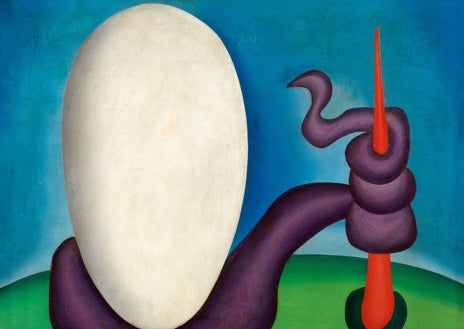
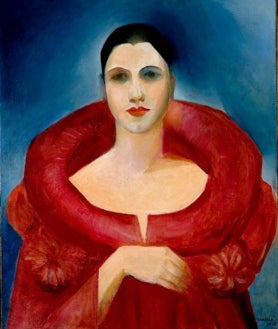
Tarsila do Amaral. Above, ‘Little Caipira (Caipirinha)’, 1923. Luiz Harunari Goshima Collection. On these lines, on the left, ‘Urutu’, 1928. Museum of Modern Art. Gilberto Chateaubriand Collection, Rio de Janeiro. On the right, ‘Self -portrait’, 1923. National Museum of Fine Arts/Ibram, Rio de Janeiro
As Tarsila herself confessed, 1923 was a decisive year in her career. He returns to Paris, where he gets fully into the effervescent artistic scene. Hug the cubismthat she conceives as the “military service” of the modern artist (“every artist, to be strong, has to go through him”). There are three painters who had a decisive influence on their formation: André Lhote, Fernand Léger and Albert Gleizes. Also, the poet Blaise Cendars. Tarsila code with the aristocracy of Bohemia: Picasso, Miró, Cocteau, the Delaunay, María Blanchard … this would say in a class: “Vous Savez Trop” (“You know too much”).
Exotic, sophisticated, cosmopolitan (He spoke French, played the piano, he wore from Patou and Poiret), Tarsila dazzles in Paris with the character he has created, an image that becomes his own brand and with which he illustrates the cover of the catalogs of his exhibitions: The hair collected very wardrobe, the lips painted of an intense crimson and long earrings. Thus self -portrait in 1923 and 1924. The result, A ‘exotico’ tarsilawhich fascinates in the French capital, as happened with Frida Kahlo in the United States. Both self -portraits hang at the exhibition with another, ‘Caipirinha’, of 1923, in which it is painted in a cubist way but as a Brazilian peasant. This duality between Paris and Sao Paulo would mark his life and his work, so complex. “A Caipirinha dressed in Poiret”. As a Brazilian peasant dressed by the French dressmaker Paul Poiret was defined by Andrade in the poem ‘Atelier’.
Upon his return to Brazil in 1924, Tarsila do Amaral travels aboard a Cadillac through the country (Sao Paulo, Rio de Janeiro, Minas Gerais) with the aim of reconnect with its rootsrediscover the landscape, earth, traditions and find her identity as a Brazilian painter. «I want to be the painter of my land. I am deeply Brazilian »write to your family.
There is Two very prominent absences In the exhibition. On the one hand, ‘Abaporu’, icon and symbol of Brazilian and Latin American art. Something like Brazil’s ‘Lisa Mona’. The painting, a birthday gift for her husband, represents a figure with a tiny head and a gigantic body, a cactus and the sun. The painting is in the hands, of course, of the Argentine collector Eduardo Costantini (bought it at Christie’s in New York in 1995 for 1.3 million dollars, today its price would be astronomical). In the Malba de Buenos Aires the key works of Latin America: Frida Kahlo, Diego Rivera, Leonora Carrington, Remedios Varo … and Tarsila do Amaral. ‘Abaporu’ does not lend.
They hang a couple of sketches in the Guggenheim rooms next to the ‘Anthropophagus manifesto’, Published in 1928 by Andrade Oswald and that gave rise to anthropophagy. This movement is created around ‘Abaporu’, a word in the Tupi-Guaraní indigenous language which means ‘man who eats man’. A Artistic cannibalism with which Tarsila devoured the European avant -garde by digesting them in a completely own Brazilian modernity.
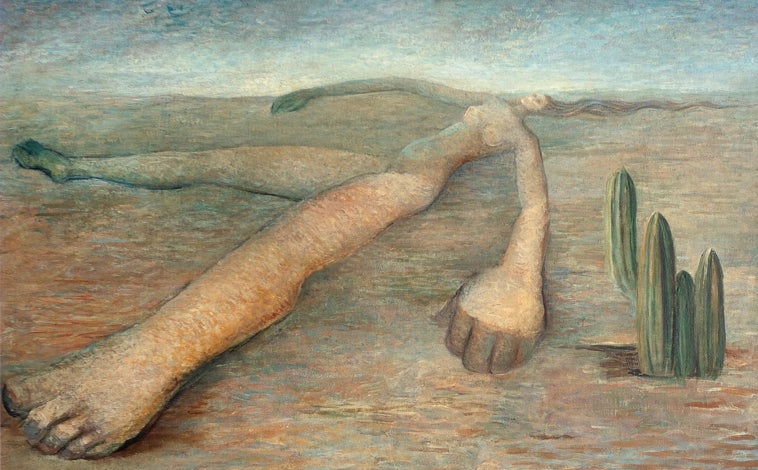
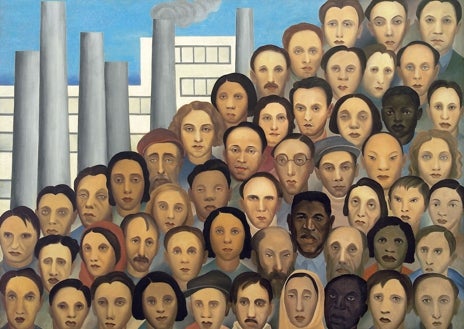
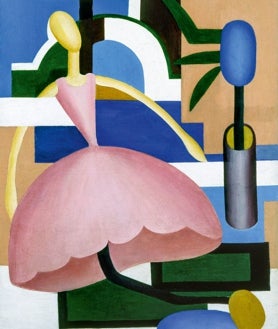
Tarsila do Amaral. Above, ‘Earth’, 1943. Zoé Noronha Chagas Freitas Succession, Rio de Janeiro. On these lines, on the left, ‘workers’, 1933. Artistic-cultural heritage of the Government Palaces of the State of Sao Paulo. On the right, ‘La Doll’, 1928. Hecilda Collection and Sergio Fadel, Rio de Janeiro
Nor is it in the exhibition ‘Black’of the Museum of Contemporary Art of the University of Sao Paulo. A very requested work. Only two sketches of the painting hang, which was at the Parisian headquarters of the exhibition. There is a lot of criticism in Brazil, explains Cecilia Braschi, around the eyes of this woman, white, rich, cultured, independent (Tarsila) about that black woman, which apparently was a slave of the family hacienda who breastfed her. Slavery was abolished in Brazil two years after Tarsila was born. There are those who see a racist look, of the model subordination. «You have to rethink the presence of blacks, and especially black women, in art. It is a very current debate. The museum where it is carried out has made a new installation around the theme of black women in Brazilian art ». The commissioner does not want to judge the painter, He does not see a “personal racism” in Tarsilawhich has a very ‘Europeanized’ look, but an “intrinsic, stereotyped, cultural racism.”
The exhibition does not focus only on its best known time. It also addresses a somewhat dark stage, in which, after being ruined with the New York Stock Exchange crack and separate from Oswald from Andrade, travel with his new partner (Osorio César, a psychiatrist and intellectual of the left) to the USSR. There is a room dedicated to this militant painting, which ranges from social realism and Mexican muralism and whose palette darkens. Next to the best known painting of this period, ‘workers’, hung unpublished canvases. Her passage through the Soviet Union took her to jail in 1932 on her return to Brazil, accused of exercising Marxist proselytism. It was retained almost a month.
From 1933 to 1949 Tarsila falls into oblivionfrom which he leaves in 1950. He suffered the tragedy of his daughter’s deaths, sweet, and his granddaughter Beatriz. His last partner was the writer Luís Martins. The exhibition tour ends with his last paintings, in which he returns to the reasons for his previous compositions, but seems somewhat lost. They blame him to copy what he did before. The freshness of his works of the 20s no longer has his work. Geometric abstraction, the skyscraper, the birth of Brasilia … sneak in his painting. There is no tarsila, there are many. She was a woman, an artist, always out of place: ‘Exoticized’ in Paris and ‘Europeanized’ in Brazil.
#Tarsila #Amaral #Brazilian #cannibal #devours #Guggenheim #Bilbao



